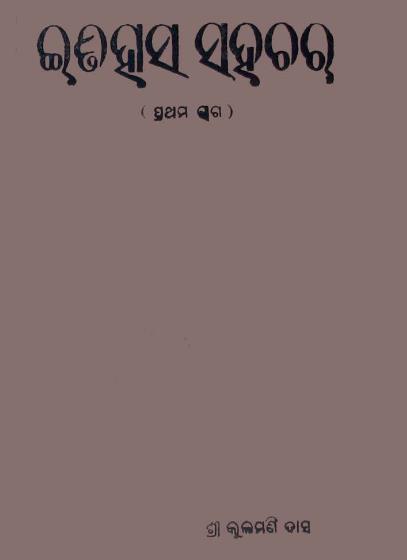Published in 1948, Itihasa Sahachara, Volume 1 by Kulamani Das is a significant textbook that contributes to the field of Odia historiography and education. This work is designed to familiarize students and readers with the rich historical narrative of Odisha, offering a comprehensive overview of significant events, cultural milestones, and influential figures that have shaped the region’s past.
Itihasa Sahachara translates to Companion to History, reflecting Kulamani Das’s intention to create a resource that is accessible and engaging for learners. The textbook is structured logically, moving through various historical periods and themes, each meticulously documented to provide context to Odia history. Das’s approach combines narrative storytelling with educational rigor, making historical facts not only informative but also relatable.
The text is primarily aimed at students, providing them with a foundational understanding of Odisha’s history. It serves as a bridge between academic study and the broader appreciation of the region’s heritage. By structuring the content to appeal to young learners, Das enhances the pedagogical value of the book.
One of the primary themes of Itihasa Sahachara is the exploration of Odisha’s cultural and historical identity. The textbook covers significant periods, from ancient times through the medieval era to the modern age, offering insights into the socio-political developments that have influenced the state. Key historical events are presented chronologically, allowing readers to grasp the evolution of Odisha’s society and culture.
Das places a strong emphasis on notable rulers, political shifts, and the contributions of different communities to Odisha’s development. This comprehensive approach allows readers to appreciate the diversity within the state’s history and recognize the interconnections between various historical narratives. The book also highlights the contribution of Odisha to broader Indian history, situating it within a larger national context.
Kulamani Das’s writing style is both engaging and accessible. He employs clear language, thoughtful explanations, and descriptive imagery to bring history to life. This approach is particularly important in educational texts, where complex historical events need to be communicated effectively to foster understanding and retention among students.
The inclusion of illustrations, maps, and timelines further enhances the textbook’s educational value. These visual aids help students visualize historical developments and geographical contexts, reinforcing their comprehension of the material. Das’s emphasis on visual learning is crucial in a historical textbook, making the learning experience more dynamic and interactive.
One of the underlying objectives of Itihasa Sahachara is to promote a sense of cultural pride and national identity among Odia readers. By documenting and celebrating the achievements of Odisha’s history, Das aims to instill a sense of belonging and pride in the state’s heritage. This focus on cultural preservation is particularly relevant in the post-independence context when regional identities were becoming increasingly significant within the broader narrative of Indian nationhood.
Das’s work also contributes to the development of Odia education and literature. By providing a well-researched historical account, he lays the groundwork for future scholars and educators, helping to cultivate a deeper understanding of Odisha’s past among young learners.
Books Info
| Books name | Itihasa Sahachara / ଇତିହାସ ସହଚର |
| Author | Kulamani Das |
| No Of pages | 93 |
| Publisher | NA |
| Publication | 1948 |
| Printed At | NA |
| Distributor | NA |

